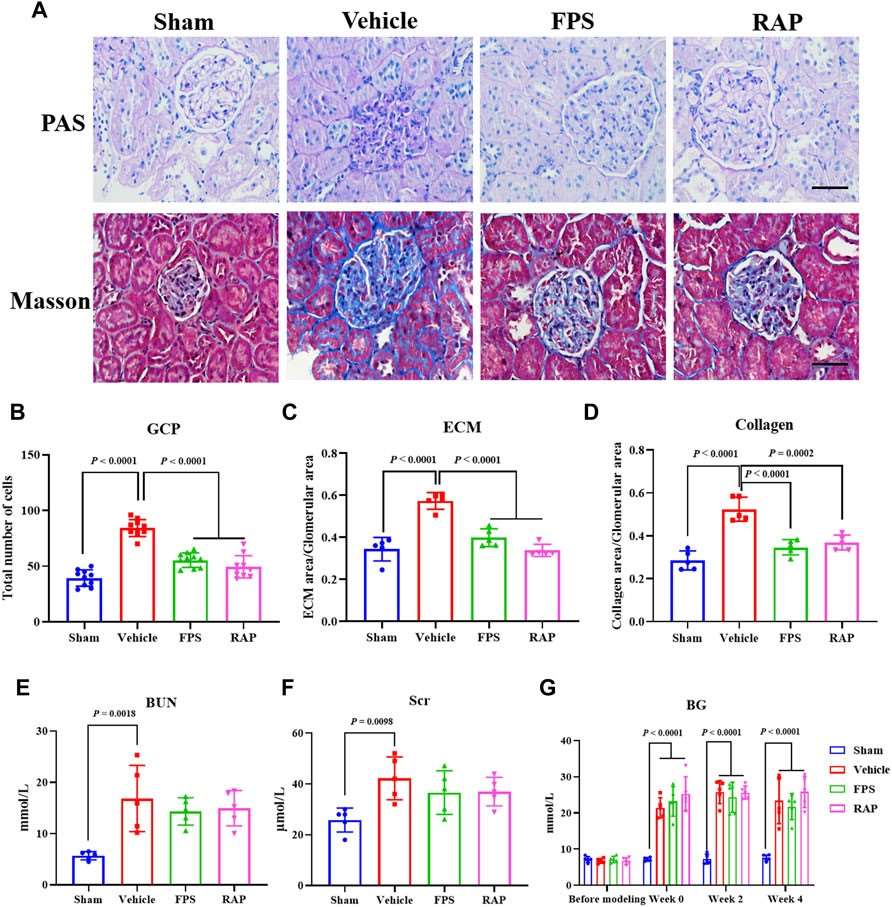- You are here: Home
- Disease Models
- Urology Disease Models
- Diabetic Nephropathy (DN) Models
- Nephrectomy/Streptozotocin (STZ)/High Fat Diet-Induced Diabetic Nephropathy (DN) Model
Disease Models
- Oncology Models
-
Inflammation & Autoimmune Disease Models
- Rheumatoid Arthritis Models
- Glomerulonephritis Models
- Multiple Sclerosis (MS) Models
- Ocular Inflammation Models
- Sjögren's Syndrome Model
- LPS-induced Acute Lung Injury Model
- Peritonitis Models
- Passive Cutaneous Anaphylaxis Model
- Delayed-Type Hypersensitivity (DTH) Models
- Inflammatory Bowel Disease Models
- Systemic Lupus Erythematosus Animal Models
- Asthma Model
- Sepsis Model
- Psoriasis Model
- Atopic Dermatitis (AD) Model
- Scleroderma Model
- Gouty Arthritis Model
- Carrageenan-Induced Air Pouch Synovitis Model
- Carrageenan-Induced Paw Edema Model
- Experimental Autoimmune Myasthenia Gravis (EAMG) Model
-
Cardiovascular Disease Models
- Surgical Models
- Animal Models of Hypertension
- Venous Thrombosis Model
- Atherosclerosis model
- Cardiac Arrhythmia Model
- Hyperlipoidemia Model
- Doxorubicin-induced Heart Failure Model
- Isoproterenol-induced Heart Failure Model
- Arterial Thrombosis Model
- Pulmonary Arterial Hypertension (PAH) Models
- Heart Failure with Preserved Ejection Fraction (HFpEF) Model
-
Neurological Disease Models
- Alzheimer's Disease Modeling and Assays
- Seizure Models
- Parkinson's Disease Models
- Ischemic Stroke Models
- Acute Spinal Cord Injury (ASCI) Model
- Traumatic Brain Injury (TBI) Model
- Hypoxic-Ischemic Encephalopathy (HIE) Model
- Tourette Syndrome (TS) Model
- Amyotrophic Lateral Sclerosis (ALS) Model
- Huntington's Disease (HD) Model
- Intracerebral hemorrhage (ICH) Models
- Pain Models
- Metabolic Disease Models
- Liver Disease Models
- Rare Disease Models
- Respiratory Disease Models
- Digestive Disease Models
-
Urology Disease Models
- Cisplatin-induced Nephrotoxicity Model
- Unilateral Ureteral Obstruction Model
- 5/6 Nephrectomy Model
- Renal Ischemia-Reperfusion Injury (RIRI) Model
- Diabetic Nephropathy (DN) Models
- Passive Heymann Nephritis (PHN) Model
- Adenine-Induced Chronic Kidney Disease (CKD) Model
- Kidney Stone Model
- Doxorubicin-Induced Nephropathy Model
- Orthopedic Disease Models
- Ocular Disease Models
- Skin Disease Models
- Infectious Disease Models
Nephrectomy/Streptozotocin (STZ)/High Fat Diet-Induced Diabetic Nephropathy (DN) Model
If you are in search of a dependable partner to evaluate the efficacy of your drug candidates in the diabetic nephropathy (DN) model, look no further than Creative Bioarray. We stand out as the premier choice for such evaluations. Our team has successfully developed a robust diabetic nephropathy model, which is induced through a combination of nephrectomy, streptozotocin (STZ) administration, and a high-fat diet regimen. This model's stability and reliability make it an ideal platform for testing the effectiveness of potential therapeutic agents against this common and challenging complication of diabetes.
DN stands as one of the primary microvascular complications associated with long-term diabetes, significantly impacting renal function. It is characterized by a gradual rise in albuminuria followed by a decline in the glomerular filtration rate. This condition has not only diminished the quality of life but has also markedly reduced the survival rate among diabetic patients. Unfortunately, the efficacy of antidiabetic drugs in shielding against DN has been compromised due to their inadequate therapeutic effects and the occurrence of severe adverse reactions. To address this challenge, researchers have developed diabetic nephropathy animal models, such as those induced by nephrectomy, STZ, and a high-fat diet. These models play a crucial role in studying the pathogenesis of DN and in testing the potential of new therapeutic agents to combat this debilitating complication of diabetes.
Our Nephrectomy/Streptozotocin (STZ)/High Fat Diet-Induced Diabetic Nephropathy Model
- Available Animal
Rat
- Modeling Method
- Step 1: Rats undergo left nephrectomy.
- Step 2: After nephrectomy, rats are fed a high fat diet and injected intraperitoneally with STZ.
- Step 3: The achievement of successful diabetes induction is determined by consistent monitoring of random blood glucose levels exceeding 16.6 mmol/L. Subsequently, the rats' diet is switched to standard chow, while their blood glucose and urine parameters continue to be monitored.
- Endpoints
- Body weight
- Blood glucose
- Renal function analysis: BUN, creatinine, urine protein
- Histology analysis: H&E staining, Masson staining, etc.
- Other customized endpoints
Example Data
 Fig. 1 Effects of FPS and RAP on GS and renal function in vivo. (A) The staining of PAS and Masson stains in the diabetic kidneys (×400). Scale bar = 50 μm. (B) The number of GCP. (C) The rate of ECM area/glomerular area. (D) The rate of collagen area/glomerular area. (E, F) The levels of Scr and BUN. (G) The dynamic changes in BG after drug intervention during 4 weeks. (Wang et al. 2022)
Fig. 1 Effects of FPS and RAP on GS and renal function in vivo. (A) The staining of PAS and Masson stains in the diabetic kidneys (×400). Scale bar = 50 μm. (B) The number of GCP. (C) The rate of ECM area/glomerular area. (D) The rate of collagen area/glomerular area. (E, F) The levels of Scr and BUN. (G) The dynamic changes in BG after drug intervention during 4 weeks. (Wang et al. 2022)
Quotation and Ordering
At Creative Bioarray, our scientific team has extensive experience in assisting clients with selecting suitable models and assays. We also collaborate to design new models that cater to the specific requirements of a particular compound or discovery program. If you are interested in our services, please feel free to contact us at any time or submit an inquiry to us directly.
References
- Wang, M.Z., et al. Fucoidan alleviates renal fibrosis in diabetic kidney disease via inhibition of NLRP3 inflammasome-mediated podocyte pyroptosis. Frontiers in Pharmacology, 2022, 13: 790937.
- Ma, B., et al. Aucubin alleviates diabetic nephropathy by inhibiting NF-κB activation and inducing SIRT1/SIRT3-FOXO3a signaling pathway in high-fat diet/streptozotocin-induced diabetic mice. Journal of functional foods, 2020, 64: 103702.
For research use only. Not for any other purpose.

